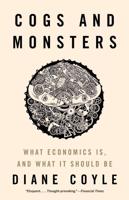Publisher's Synopsis
In reviewing the history of Canadian UI, Pal shows that while capital and labour had substantial disagreements over policy, their representations to state officials rarely had any decisive impact on policy development. The author suggests that bureaucratic forces, including organizational ideology and inter-agency conflict, provide a much richer basis for understanding UI policy evolution. The actuarial ideology of the Commission explains the conservative dynamic in UI development, while bureaucratic rivalry, which culminated in victory by the Department of Labour, explains the expansionary thrust, particularly the addition of social welfare aspects.










